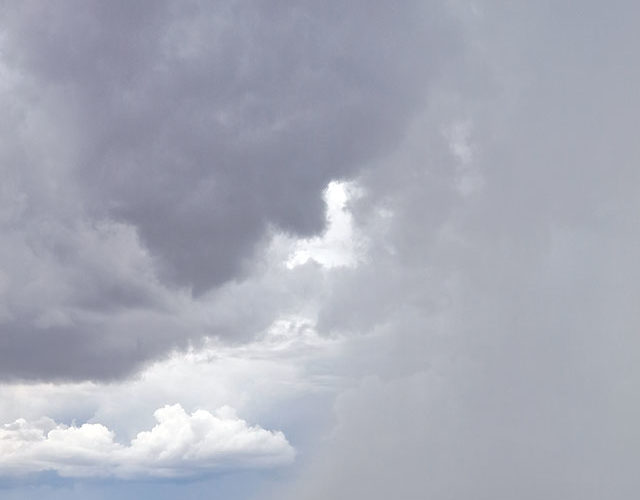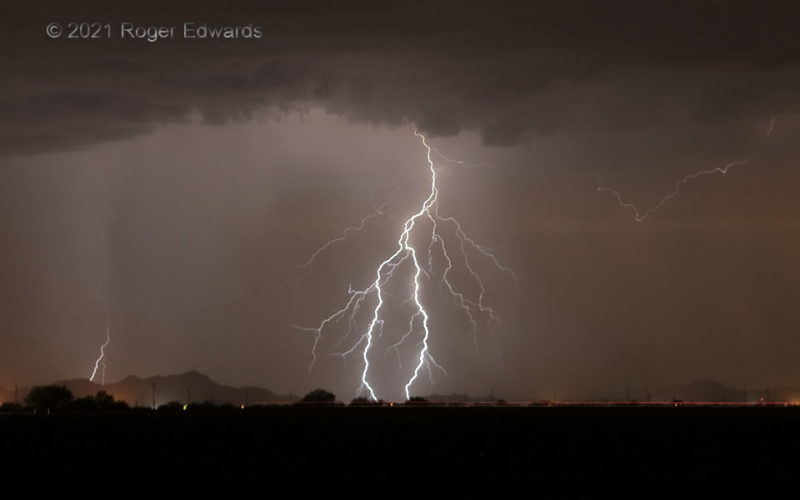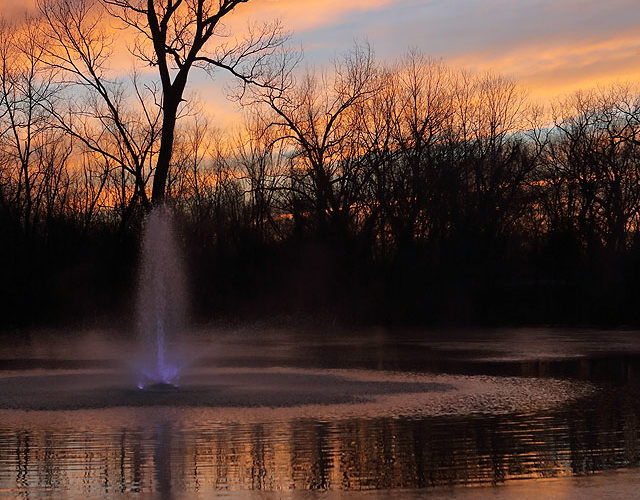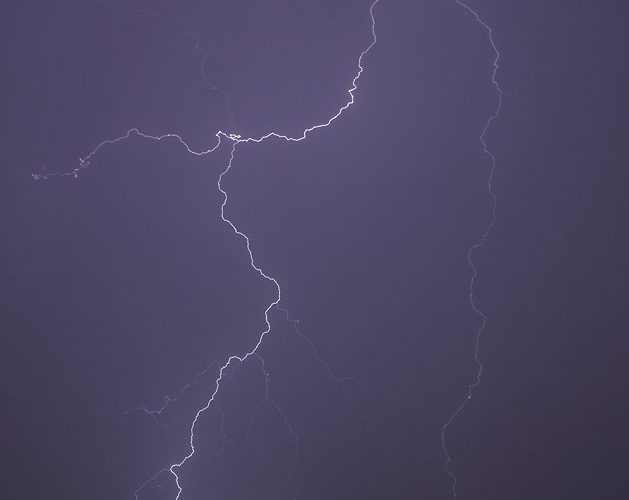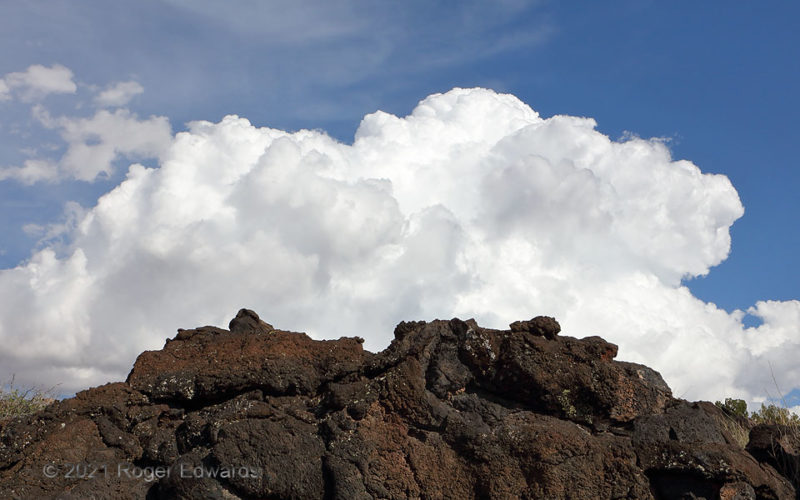In the outflows of mountain-grown thunderstorm cores, the annual southwestern North American monsoon cycle renders hot desert to cool, scuddy moistness. One of the many appeals of this regime to me, as a storm observer, is the natural clash of concept between gravelly, scrubby, mostly treeless expanse manifesting the dry climate, and wet, dark scenes like this that provide the meager yearly … [Read more...]
Split Spark
Split-channel cloud-to-ground flashes happen when two branches of a downward step leader ground themselves simultaneously, each accepting nearly half the share of the uprushing earth charge that lights up all connected forks. On this warm, breezy Arizona evening, a train of electrically profuse multicells cruised by to the north and northwest, each offering many lightning strikes to see, hear and … [Read more...]
Sunrise Tree: Early 2022
This wonderful dawn of color and light followed an amazing sunset in Norman, which itself painted a brilliant encore to a spectacular sunset show two days before that. Since the previous fall, neighboring property owners have floated a fountain out onto the pond fronting the sunrise tree, further texturing the marvelous sunrises I sometimes see there, and offering lessons in phase change of … [Read more...]
Dim and Dimmer
Some lightning flashes simply are much dimmer than others, this one particularly so. Yet its faintness can't be explained by partial exposure (the shutter was open before and after), burial deep in a core (notice its very sharp and intricate detail), nor distance (the thunder took about 10 seconds, or two miles' sound length) to arrive. A normally bright cloud-to-ground discharge at similar … [Read more...]
Malpais Framing Cumulonimbus
Only about 5,000 years ago—the blink of an eye in geologic time—a small cinder cone in the north part of the Tularosa Basin poured forth a slow, nearly steady lava flow for about a decade, similar to some of Kilauea's action in Hawaii. Still rugged and sharp, the flow known as Carrizozo Malpais, or Valley of Fires, is one of the youngest in the continental U.S. The lava field extends for 44 … [Read more...]
Heat Flow
Two thousand degrees and flowing while glowing, "eruption 61g" lava further coated the Big Island's Kalapana plain, radiating more than enough heat to keep observers warm on a cool winter morning a few hundred feet above, and a couple miles upslope from, the tropical Pacific. With dawn's brightening light, the various flowing and cooled breakouts made a truly "lava-ly landscape". Over a few … [Read more...]
- « Previous Page
- 1
- …
- 75
- 76
- 77
- 78
- 79
- …
- 386
- Next Page »
